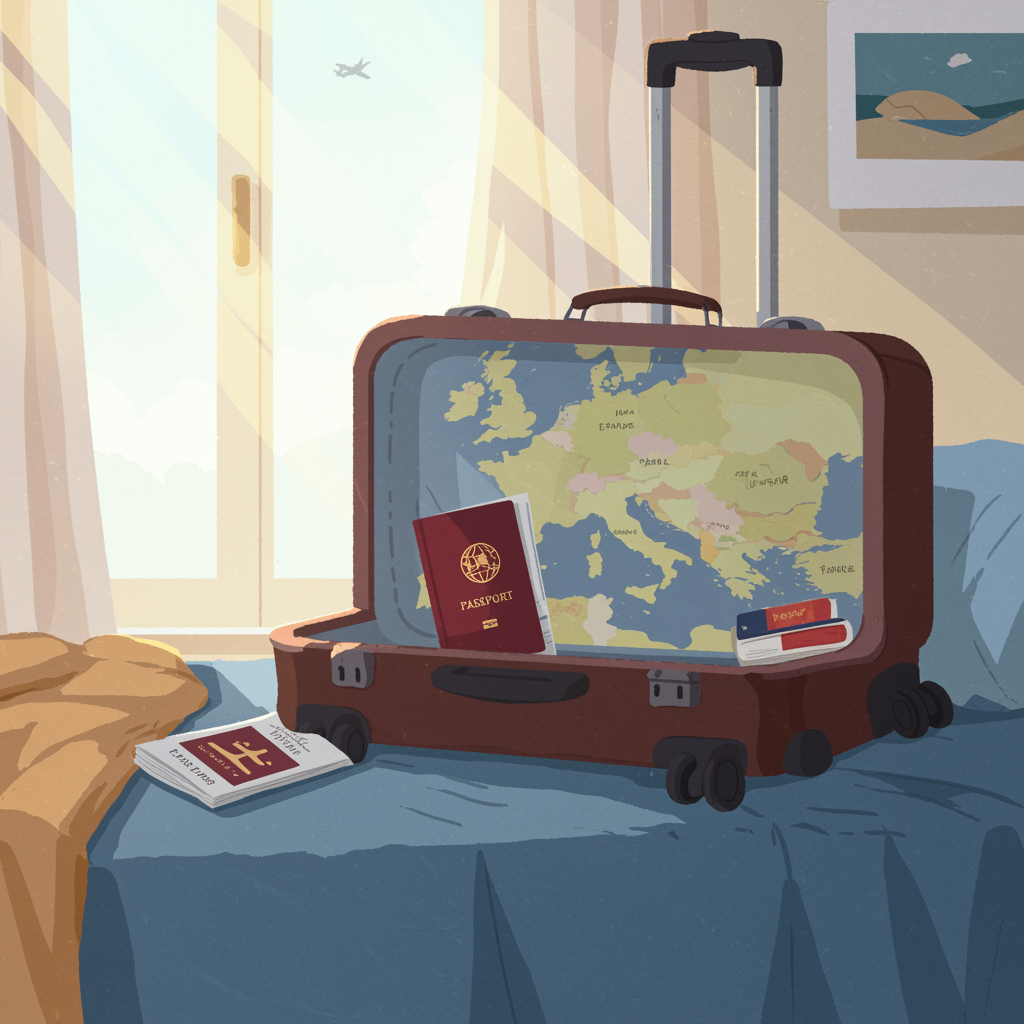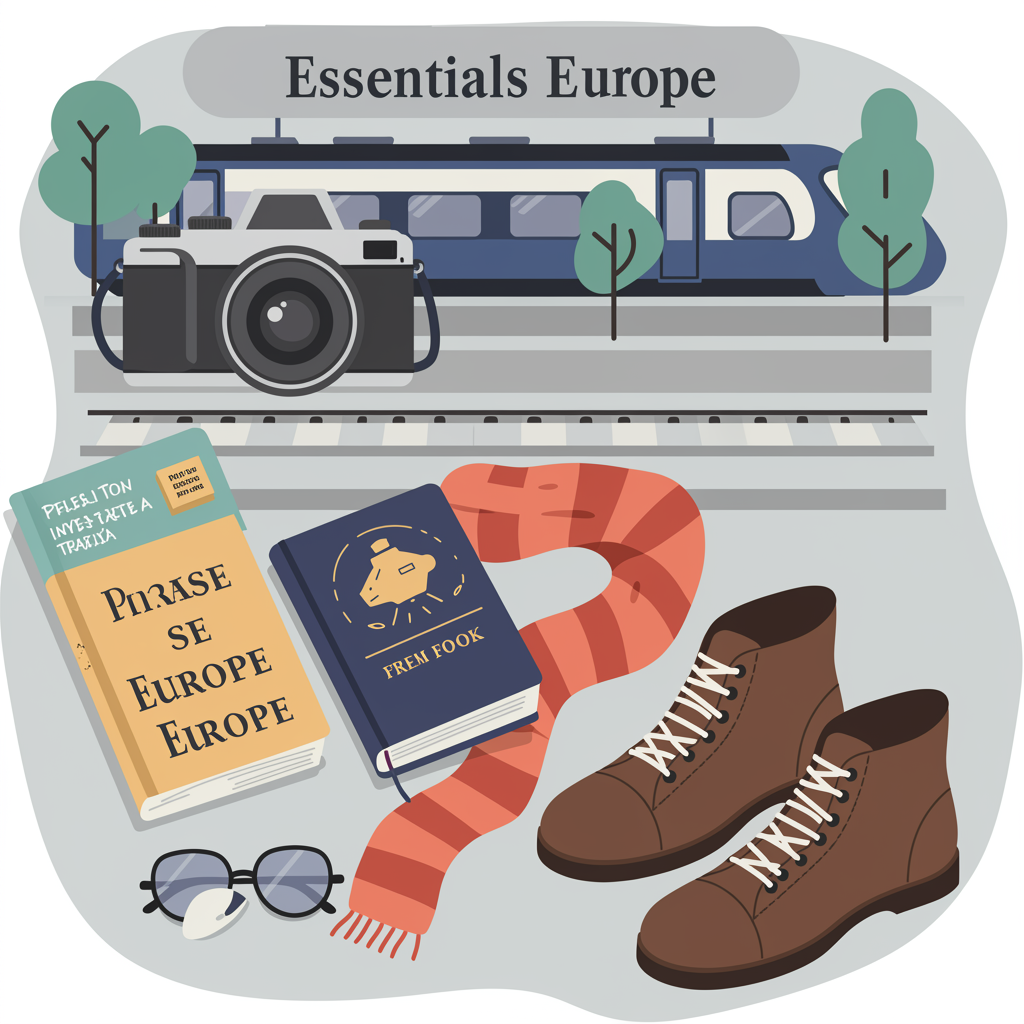Heading to Europe for your studies is a dream come true — ancient cities, modern art, and countless adventures await. But before you jet off, figuring out what to pack when studying abroad in Europe can feel overwhelming. European climates, culture, and travel opportunities mean your suitcase has to work hard for you. This ultimate guide will make sure you pack smart, light, and with style.

1. Understanding Europe’s Climate and Lifestyle
Europe is diverse. Packing for Barcelona isn’t the same as packing for Berlin. Southern Europe tends to have hot summers and mild winters, while Northern Europe may be chilly and rainy most of the year. The secret? Layers. You’ll need clothing that can adapt to different climates and social occasions — from lectures to weekend city trips.
Quick Climate Reference Table
| Region | Climate | What to Prioritize |
|---|---|---|
| Southern Europe (Spain, Italy, Greece) | Hot, dry summers; mild winters | Light clothing, sandals, hat, sunscreen |
| Northern Europe (Germany, Netherlands, Scandinavia) | Cooler, wetter climate | Waterproof jacket, boots, thermal layers |
| Central Europe (France, Austria, Switzerland) | Variable, four distinct seasons | Versatile wardrobe, umbrella, scarves |
2. Essential Documents and Tech
Never underestimate paperwork. Keep all your key documents organized in a travel folder:
- Passport and copies
- Student visa or residence permit
- Insurance papers
- Acceptance letter and housing contract
- Emergency contact info
Your tech setup will also make or break your experience. A lightweight laptop, universal power adapter, and noise-canceling headphones are a must. Cloud storage (like Google Drive or Dropbox) helps you access files anywhere.
Recommended Tech Checklist
| Item | Why It’s Important |
|---|---|
| Laptop or Tablet | For classes, research, and staying in touch with family |
| Universal Adapter | European sockets differ by country — this saves you from confusion |
| Portable Charger | Essential for day trips or long lectures |
| External Hard Drive | Backup your projects and photos safely |
3. Packing Smart: Clothes and Accessories
Europeans are known for their understated style. Stick to simple, neutral colors that can mix and match easily. Pack items that you can dress up or down depending on the occasion.
- 5–7 casual tops
- 2–3 pairs of jeans or trousers
- 1 formal outfit
- 1 lightweight jacket and 1 warm coat
- Comfortable walking shoes and one pair of dress shoes
- Seasonal accessories (scarf, gloves, hat)
Rolling your clothes saves space and keeps wrinkles away. Packing cubes can help keep your luggage organized and compact — a must for student dorms with limited space.
4. Toiletries and Personal Care
Europe has excellent pharmacies and stores, but prices can add up. Bring enough essentials to last the first few weeks:
- Toothbrush, toothpaste, deodorant, shampoo, conditioner
- Basic first-aid kit (bandages, painkillers, cold medicine)
- Reusable water bottle — many cities have public fountains
5. Academic Supplies
Although much coursework is digital, you’ll still need a few basics. Universities often provide welcome kits, but bring your own essentials:
- Notebooks, pens, highlighters
- USB drive
- Planner or digital calendar for deadlines
6. Cultural and Travel Must-Haves
Studying abroad isn’t just about lectures. You’ll want to explore! These items will make your travels smooth:
- Student ID card (often gives transport and museum discounts)
- Comfortable backpack for weekend trips
- Compact umbrella — sudden rain is common
- Travel-size laundry detergent and quick-dry towel
- Reusable shopping bag (many European stores charge for plastic)
7. European Etiquette and Practical Tips
Europeans value sustainability and politeness. Here’s how to blend in:
- Bring a small set of reusable utensils and coffee cup
- Learn a few basic phrases in the local language
- Pack modest clothing for church or cultural visits
8. Packing Light but Right
When thinking about what to pack when studying abroad in Europe, the golden rule is: bring less than you think. European apartments and dorms are smaller, and you’ll likely buy more during your stay. Choose versatile pieces that suit both academic and social life. If you’re flying with a low-cost airline, be mindful of luggage weight limits.

9. Packing for Different Seasons
European weather changes quickly. Prepare your wardrobe for all seasons, especially if you’re staying for a full academic year.
| Season | Essentials |
|---|---|
| Autumn | Layered sweaters, raincoat, boots |
| Winter | Warm coat, gloves, hat, thermal base layer |
| Spring | Light jacket, sneakers, umbrella |
| Summer | Shorts, breathable tops, sandals, sunglasses |
10. Things You Can Buy After Arrival
Some items aren’t worth the luggage space. You can easily find them locally:
- Bedding and towels
- Kitchenware
- Cleaning supplies
- Adapters (if you forget yours, they’re sold everywhere)
11. Extra Packing Tips for Europe
- Label your luggage clearly with your new address.
- Carry a small first-week survival bag (toothbrush, fresh clothes, charger).
- Use a document pouch for safety during travel.
- Keep medication in original packaging for customs inspection.
Remember, what to pack when studying abroad in Europe is as much about mindset as it is about material things. Think flexibility, curiosity, and openness — your best travel essentials are adaptability and a sense of wonder.